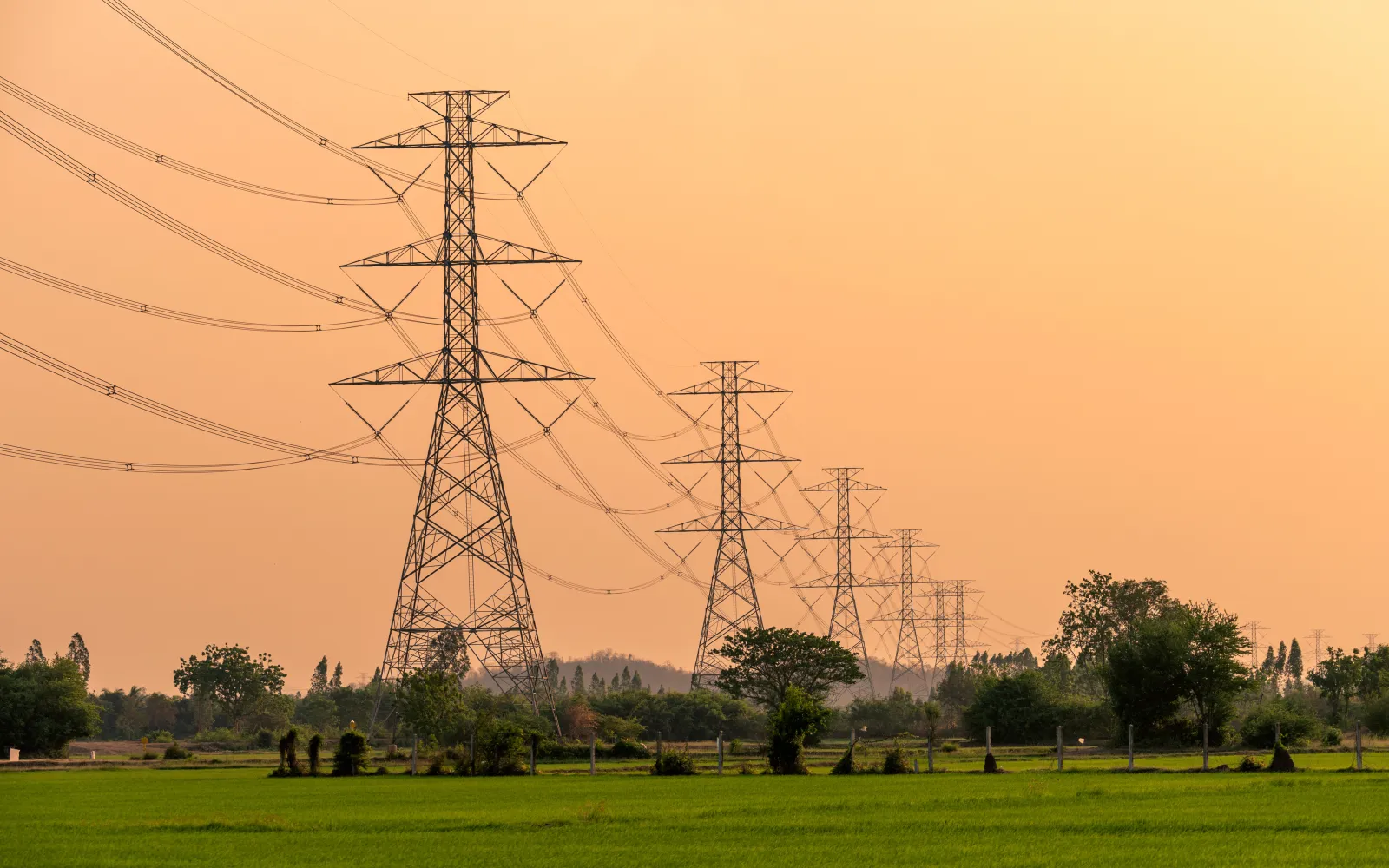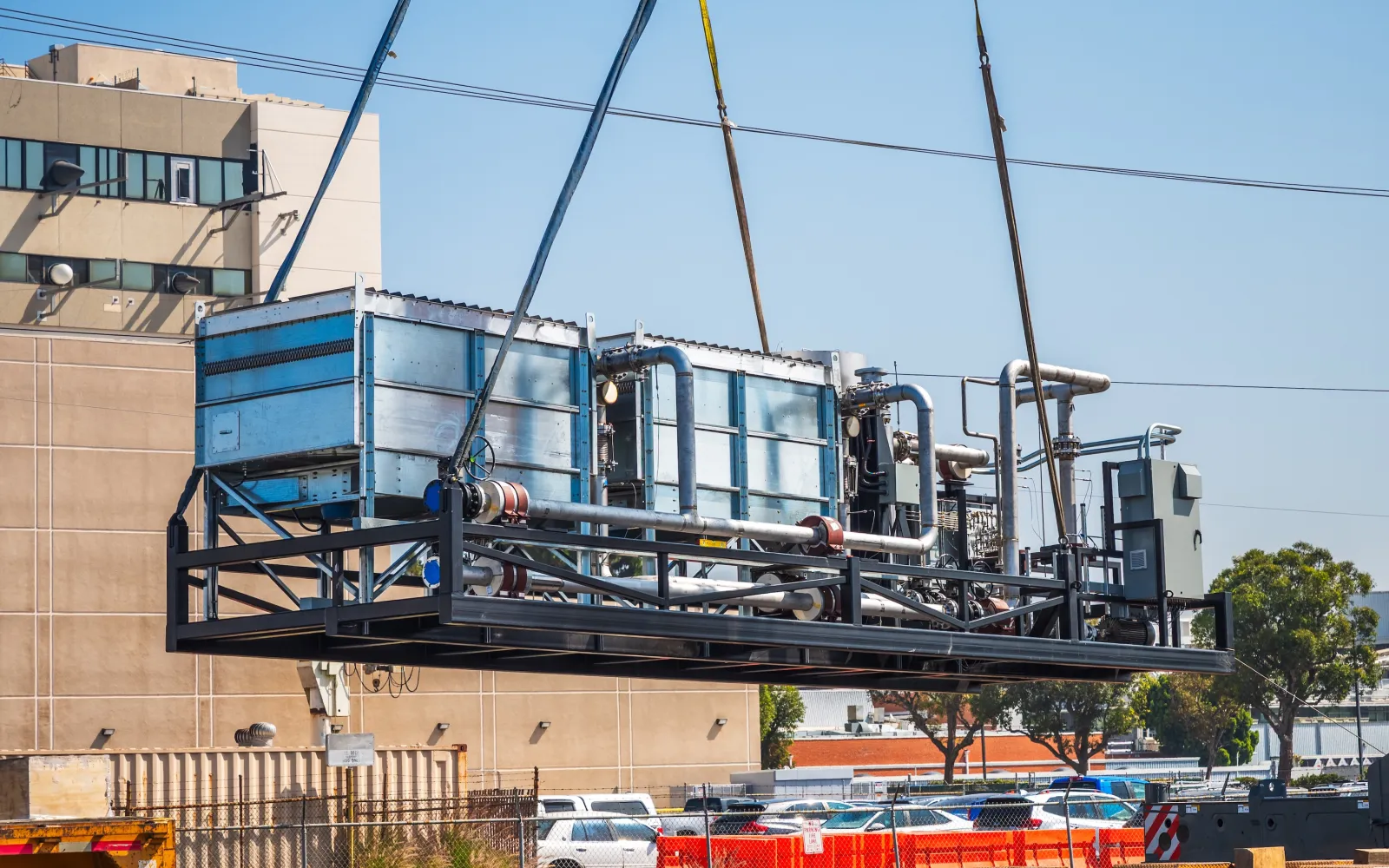
Fourth Power
Building thermal energy storage technology to buffer the grid, as variable electricity sources replace polluting ones
The U.S. electricity grid is at a critical juncture. Demand for power is surging, yet meeting it with new natural gas plants would lock in decades of carbon emissions.† And the capacity for renewables to meet new demand is severely limited by their intermittency — we need to store vast amounts of wind and solar power when it is plentiful for use when it’s not — and do it affordably.
Enter Fourth Power, a startup that’s cracked the code of long-duration, cost-effective energy storage at scale. Their technology can take excess electricity, store it cheaply for 5+ hours, and send it back to the grid when needed at over 40 percent efficiency. It’s a feat unmatched by any other solution today, which is why we led their $19 million Series A last year.
We sat down with Fourth Power’s CEO, Arvin Ganesan, to learn how the company’s technology could be the key to affordably decarbonizing the grid while keeping pace with skyrocketing electricity demand.
DCVC: What makes Fourth Power’s technology not only unique but also cost-effective for storing energy?
Ganesan: We use liquid tin to efficiently transfer heat to and from large, insulated blocks of graphite carbon. The tin is heated to over 2500°C by renewable electricity and then pumped through graphite pipes embedded in the carbon blocks, heating them until they glow white-hot, like an engineered “sun-in-a-box.” To discharge the battery, the molten tin transfers the heat back out of the carbon blocks and through thermophotovoltaic (TPV) cells that convert the intense light radiated by the hot tin back into electricity on demand. So tin serves as both the charging and discharging heat-transfer medium.
One of the keys is that tin and graphite have no chemical reactivity even at extreme temperatures, so the system has a very long lifetime. And the system relies on two elements – tin and carbon – that are abundant and low-cost. Finally, graphite is a material that can tightly pack a huge amount of heat. Coupling these low-cost, resilient inputs with very high temperatures allows our battery to achieve unmatched energy storage density and efficiency at a cost ten times lower than lithium-ion batteries. The modular system is readily scaled up by adding more carbon block stacks to increase duration.
DCVC: The Series A round announced in December 2023 will support the construction of a demonstration facility outside of Boston. Can you share more details on that project, including the goals and timeline?
Ganesan: We will be constructing a 1 MWh-scale demonstration facility about 30 miles outside of Boston, slated for completion in 2026. The demo will integrate all the key elements – the high-temperature tin pumping system, the carbon block thermal storage, and the TPV power generation – at a scale representative of a full-size battery.
While 1 MWh is only enough electricity to power a few dozen homes for a day, the goal is to meaningfully retire the technical risks by showing our commercial-scale component designs in an operational, grid-connected system. We’ll be putting the tin pumping, carbon blocks, and TPV cells through their paces in real-world conditions.
This sets the stage to then scale up to 100 MWh‑1 GWh sized batteries in collaboration with utility partners. The demo gives us and utilities the confidence to take that next step to full commercial rollout. We’re already in discussions with several forward-looking utilities on pilots to follow after the demo.
DCVC: Utilities can be cautious about new technologies. What challenges do you foresee in getting widespread adoption of your technology and how are you working to overcome those?
Ganesan: Utilities have to be somewhat conservative since their core mission is to keep the lights on reliably and affordably. They need to have confidence in any new technology before deploying it at scale. That’s why we’re so focused on our demo project to prove the performance and reliability of our design.
At the same time, our technology aligns very well with utilities’ needs. It will provide the same dispatchability and grid stability as fossil-fuel plants, with even faster response times, allowing utilities to maintain control over a grid with high penetrations of variable wind and solar.
Crucially, the total cost of our battery plus renewables is projected to be lower than a new natural gas plant. So, utilities can add this storage while lowering costs for customers. Utilities are rightly concerned about energy affordability, and we can deliver big cost savings at a time when electricity demand is soaring from EVs, data centers, and electrification.
We’re seeing strong policy tailwinds as well, with nine states now having long-duration storage mandates and the Inflation Reduction Act providing incentives. So, while scaling a new technology is never easy, the technical and economic advantages of our system, combined with the right policy environment, give us a clear path to gigawatt-scale impact.
DCVC: As you pointed out, demand for electricity is surging, but our energy system is also under massive pressure to decarbonize. How can Fourth Power’s technology uniquely address the dual challenges of climate change and energy affordability at the massive scale required?
Ganesan: We’re at an inflection point where the grid is being asked to do two things at once: phase out carbon-emitting fossil-fuel plants to confront climate change, while expanding to handle massive new demand from EVs, heat pumps, and electrification of industry. Wind and solar are now the cheapest sources of bulk electricity, but their variability has limited how fast they can be deployed.
Our technology is the missing link to enable an affordable, reliable, decarbonized grid. By storing huge amounts of renewable energy when it’s abundant and discharging it when needed, we can make wind and solar into 24⁄7 resources. And the duration of our batteries provides resilience to multi-day extreme weather events that are becoming more common.
While lithium batteries have made important early progress, we ultimately need terawatt-scale energy storage to remake the grid, and that can’t all come from one supply-constrained chemistry. Our technology relies on abundant, low-cost materials and is ready to rapidly scale up as renewables expand their share of generation.
At the end of the day, decarbonizing the grid can’t come at the price of soaring energy bills, or it won’t be politically sustainable. One in three U.S. households already struggle with energy costs. Fourth Power can put the lowest-cost clean power to work around the clock, ensuring the energy transition is affordable and equitable.
†Of course, geothermal and nuclear have a role to play here, too.




